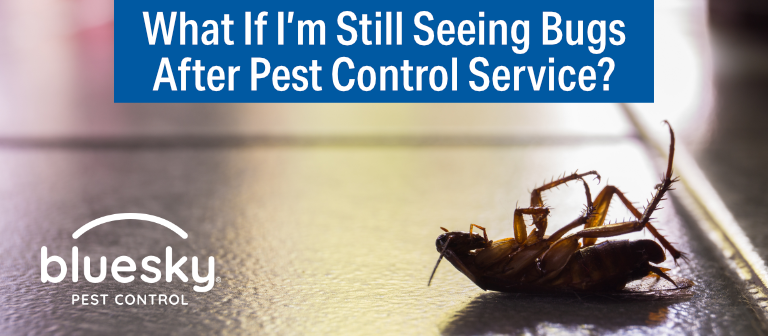Things about Eco Bed Bug Exterminators Dc
Things about Eco Bed Bug Exterminators Dc
Blog Article
Everything about Eco Bed Bug Exterminators Dc
Table of ContentsFacts About Eco Bed Bug Exterminators Dc RevealedSome Known Facts About Eco Bed Bug Exterminators Dc.The Basic Principles Of Eco Bed Bug Exterminators Dc The smart Trick of Eco Bed Bug Exterminators Dc That Nobody is DiscussingThe 6-Second Trick For Eco Bed Bug Exterminators Dc
Because pesticides are poisonous, they are also potentially unsafe to human beings, animals, other organisms, and the environment. People who use pesticides or regularly come in call with them should recognize the family member toxicity, potential health effects, and preventative steps to minimize direct exposure to the products they utilize. Risk, or danger, of utilizing pesticides is the capacity for injury, or the level of threat associated with using a chemical under an offered collection of conditions.
Nonetheless, applicators can reduce or virtually remove exposure-- and hence reduce risk-- by adhering to the tag directions, making use of individual safety apparel and devices (PPE), and taking care of the pesticide appropriately. For example, even more than 95 percent of all chemical direct exposures come from dermal direct exposure, largely to the hands and lower arms. By putting on a pair of unlined, chemical-resistant handwear covers, this sort of exposure can be almost removed.
The unsafe impacts that take place from a solitary exposure by any course of access are called "intense results." The four paths of exposure are dermal (skin), breathing (lungs), dental (mouth), and the eyes. Acute toxicity is figured out by examining the dermal poisoning, inhalation poisoning, and dental toxicity of test animals.
Eco Bed Bug Exterminators Dc Fundamentals Explained
Intense toxicity is determined as the quantity or focus of a toxicant-- the a.i.-- required to kill half of the pets in an examination populace. This measure is typically revealed as the LD50 (deadly dose 50) or the LC50 (lethal concentration 50). In addition, the LD50 and LC50 worths are based on a single dosage and are videotaped in milligrams of chemical per kg of body weight (mg/kg) of the examination animal or partially per million (ppm).
The lower the LD50 or LC50 value of a chemical item, the higher its poisoning to people and pets. Pesticides with a high LD50 are the least toxic to people if utilized according to the directions on the item label. The chronic toxicity of a chemical is established by subjecting test pets to lasting exposure to the active ingredient.
The persistent poisoning of a pesticide is harder than intense poisoning to establish with lab analysis. Products are classified on the basis of their family member severe poisoning (their LD50 or LC50 worths). Chemicals that are categorized as highly hazardous (Toxicity Group I) on the basis of either oral, facial, or inhalation poisoning have to have the signal words threat and POISON published in red with a skull and crossbones icon prominently presented on the front panel of the package tag.
The intense (single dosage) dental LD50 for chemical products in this group varies from a trace quantity to 50 mg/kg. Direct exposure of a couple of decreases of a product taken by mouth could be fatal to a 150-pound individual. https://www.ted.com/profiles/46466221. Some pesticide products have simply the signal word threat, which tells you absolutely nothing about the acute poisoning, simply that the product can cause extreme eye damage or extreme skin irritability
The 4-Minute Rule for Eco Bed Bug Exterminators Dc
In this classification, the acute dental LD50 varieties from 50 to 500 mg/kg. A teaspoon to an ounce of this product could be deadly to a 150-pound individual (exterminator). Chemical products categorized as either somewhat toxic or relatively nontoxic (Toxicity Categories III and IV) are needed to have the signal word CAUTION on the chemical label

All pesticide toxicity values, including the Consisting of, can be found on discovered product's Material Safety Data Sheet InformationMSDS). Pesticide tags and MSDS can be acquired from merchants or makes - https://www.quora.com/profile/Christopher-Savage-59. The signs and symptoms of pesticide poisoning can vary from a moderate pop over to this site skin inflammation to coma or also death.
Because of potential health worries, pesticide customers and trainers need to acknowledge the common signs and signs of pesticide poisoning. The results, or symptoms, of chemical poisoning can be broadly specified as either topical or systemic.
Eco Bed Bug Exterminators Dc Things To Know Before You Get This
Dermatitis, or inflammation of the skin, is accepted as the most typically reported topical impact connected with chemical direct exposure. Signs of dermatitis array from reddening of the skin to breakouts and/or sores. Some individuals have a tendency to cough, wheeze, or sneeze when exposed to chemical sprays. Some people respond to the solid odor and irritating impacts of petroleum distillates made use of as carriers in chemical items.
This symptom generally subsides within a couple of minutes after an individual is removed from the direct exposure to the toxic irritant. A reaction to a chemical item that creates someone not just to sneeze and cough but additionally to develop extreme acute respiratory system signs and symptoms is more likely to be a real hypersensitivity or sensitive response.
Systemic impacts are rather various from topical results. They usually happen away from the original point of contact as a result of the pesticide being absorbed into and dispersed throughout the body.
Report this page